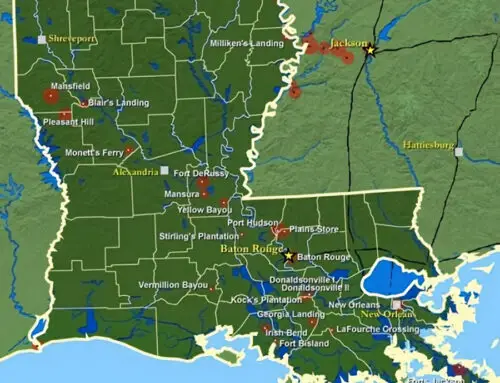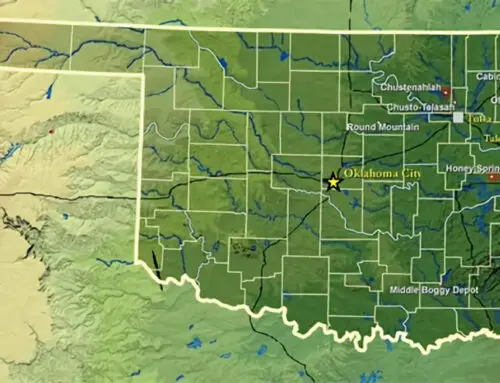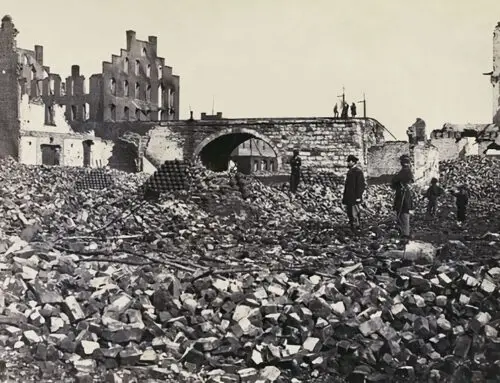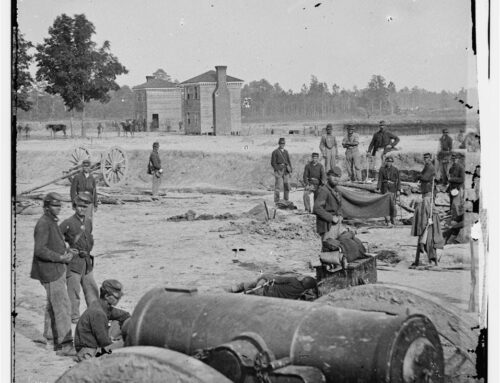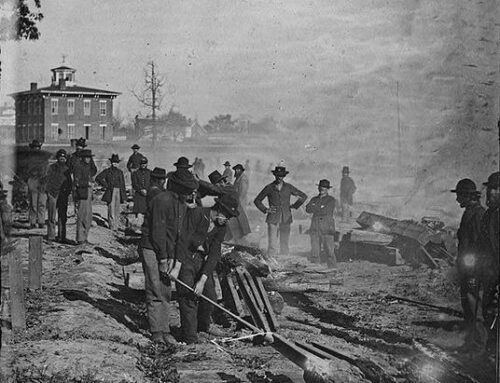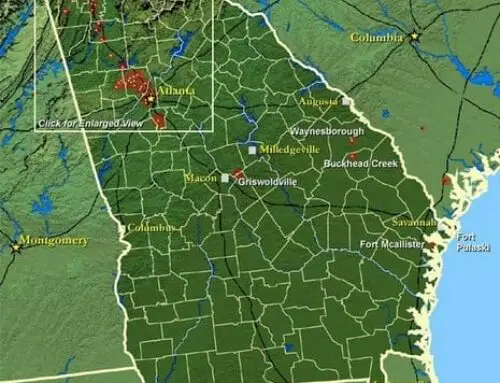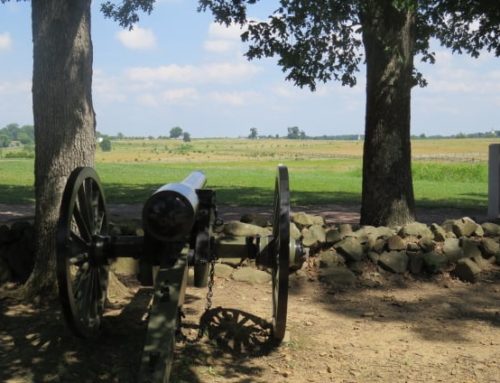Arkansas saw a great deal of fighting during the Civil War. The Union won the vast majority of the battles that took place.
The most well known and largest battle that occurred in Arkansas was the battle of Pea Ridge fought in 1862. Pea Ridge was a Union victory.
This was a very significant outcome because after this battle the Confederate army was never able to remove the Union army from the state of Arkansas.
The Confederates were able to win a couple of battles in Arkansas however it was never enough to do any real damage to the Union forces there.
The following is a list of all Civil War battles in Arkansas. They are in the order in which they occurred during the Civil War.
Some great books about Arkansas are #ad Pea Ridge: Civil War Campaign in the West (Civil War America) and #ad Wilson’s Creek, Pea Ridge, and Prairie Grove: A Battlefield Guide, with a Section on Wire Road (This Hallowed Ground: Guides to Civil War Battlefields)
Pea Ridge
Civil War battles in Arkansas
Other Names: Elkhorn Tavern
Location: Benton County
Campaign: Pea Ridge Campaign (1862)
Date(s): March 6-8, 1862
Principal Commanders: Maj. Gen. Samuel R. Curtis [US]; Maj. Gen. Earl Van Dorn [CS]
Forces Engaged: Army of the Southwest [US]; Army of the West [CS]
Estimated Casualties: 5,949 total (US 1,349; CS 4,600)
Description: On the night of March 6, Maj. Gen. Earl Van Dorn set out to outflank the Union position near Pea Ridge, dividing his army into two columns. Learning of Van Dorn’s approach, the Federals marched north to meet his advance on March 7. This movement compounded by the killing of two generals, Brig. Gen. Ben McCulloch and Brig. Gen. James McQueen McIntosh, and the capture of their ranking colonel halted the Rebel attack. Van Dorn led a second column to meet the Federals in the Elkhorn Tavern and Tanyard area. By nightfall, the Confederates controlled Elkhorn Tavern and Telegraph Road. The next day, Maj. Gen. Samuel R. Curtis, having regrouped and consolidated his army, counterattacked near the tavern and, by successfully employing his artillery, slowly forced the Rebels back. Running short of ammunition, Van Dorn abandoned the battlefield. The Union controlled Missouri for the next two years.
Result(s): Union victory
Saint Charles
Civil War battles in Arkansas
Other Names: None
Location: Arkansas County
Campaign: Operations on White River (1862)
Date(s): June 17, 1862
Principal Commanders: Col. Graham N. Fitch and Cdr. Augustus H. Kilty [US]; Capt. Joseph Fry, C.S.N. [CS]
Forces Engaged: 46th Indiana and Union Gunboat [US]; fifty men and C.S. boats [CS]
Estimated Casualties: 290 total (US 135; CS 155)
Description: On the morning of June 17, USS Mound City, St. Louis, Lexington, Conestoga, and transports proceeded up White River towards Saint Charles attempting to resupply Maj. Gen. Samuel R. Curtis’s army near Jacksonport. A few miles below Saint Charles, the 46th Indiana Infantry under the command of Col. Graham N. Fitch disembarked, formed a skirmish line, and proceeded upriver towards the Rebel batteries on Saint Charles bluffs, under the command of Capt. Joseph Fry, C.S.N. At the same time, the Union gunboats went upriver to engage the Rebel batteries; Mound City was hit and her steam drum exploded scalding most of the crew to death. More than 125 sailors from the Mound City were killed, but the other ship was towed to safety. Col. Fitch halted the gunboat activities to prevent further loss and then undertook an attack on the Confederate batteries with his infantry. He turned the Rebel flank which ended the firing from the batteries and left Saint Charles open to Federal occupation.
Result(s): Union victory
Hill’s Plantation
Civil War battles in Arkansas
Other Names: Cache River, Cotton Plant, Round Hill
Location: Woodruff County
Campaign: Operations near Cache River, Arkansas (1862)
Date(s): July 7, 1862
Principal Commanders: Col. Charles Hovey and Brig. Gen. William P. Benton [US]; Maj. Gen. Thomas C. Hindman and Col. William Parsons [CS]
Forces Engaged: 1st and 2nd Brigade, 1st Division, Army of the Southwest [US]; unknown [CS]
Estimated Casualties: 308 total (US 63; CS 245)
Description: Union Maj. Gen. Samuel R. Curtis moved on Helena, Arkansas, in search of supplies to replace those that had been promised but never delivered by the Navy. The Confederates under Maj. Gen. Thomas C. Hindman attempted to prevent this change of supply base by continually skirmishing with the Union troops. The Confederates made a stand at the Cache River on July 7. As Union Col. C.L. Harris moved forward with elements of the 11th Wisconsin, 33rd Illinois, and the 1st Indiana Cavalry, moved forward, he blundered into an ambuscade. The fighting became more general, and the Confederates, with a frontal attack, forced the Union to retreat about a quarter of a mile. The next Confederate attack, however, was stopped. With reinforcements, the Federals pursued the retreating Confederates and turned the retreat into a rout as the day progressed. Curtis was able change his supply base, but Hindman, despite suffering defeat at Hill’s Plantation, remained between Curtis and Little Rock, his objective.
Result(s): Union victory
Cane Hill
Civil War battles in Arkansas
Other Names: Canehill, Boston Mountains
Location: Washington County, Arkansas
Campaign: Prairie Grove Campaign (1862)
Date(s): November 28, 1862
Principal Commanders: Brig. Gen. James G. Blunt [US]; Brig. Gen. John S. Marmaduke [CS]
Forces Engaged: Department of Missouri [US]; two cavalry brigades [CS]
Estimated Casualties: 475 total (US 40; CS 435)
Description: In late November, Maj. Gen. Thomas C. Hindman detached Brig. Gen. John Marmaduke’s cavalry from Van Buren north to occupy the Cane Hill area. Hearing of this movement, Brig. Gen. James Blunt advanced to meet Marmaduke’s command and destroy it, if possible. The Union vanguard encountered Col. Joe Shelby’s brigade, which fought a delaying action to protect their supply trains. Shelby gradually gave ground until establishing a strong defensive perimeter on Cove Creek where he repulsed a determined attack. The Federals withdrew to Cane Hill, while the Confederates returned to Van Buren. Although fighting well, Marmaduke’s withdrawal was a setback for Hindman’s plans for recapturing northwest Arkansas. Victory at Prairie Grove a few weeks later, solidified Union control of the region.
Result(s): Confederate tactical victory
Prairie Grove
Civil War battles in Arkansas
Other Names: Fayetteville
Location: Washington County
Campaign: Prairie Grove Campaign (1862)
Date(s): December 7, 1862
Principal Commanders: Brig. Gen. Francis J. Herron and Brig. Gen. James G. Blunt [US]; Maj. Gen. Thomas C. Hindman [CS]
Forces Engaged: Army of the Frontier [US]; I Corps, Trans-Mississippi Army [CS]
Estimated Casualties: 2,568 total (US 1,251; CS 1,317)
Description: Maj. Gen. Thomas C. Hindman sought to destroy Brig. Gen. Francis Herron’s and Brig. Gen. James Blunt’s divisions before they joined forces. Hindman placed his large force between the two Union divisions, turning on Herron first and routing his cavalry. As Hindman pursued the cavalry, he met Herron’s infantry which pushed him back. The Rebels then established their line of battle on a wooded high ridge northeast of Prairie Grove Church. Herron brought his artillery across the Illinois River and initiated an artillery duel. The Union troops assaulted twice and were repulsed. The Confederates counterattacked, were halted by Union canister, and then moved forward again. Just when it looked as if the Rebel attack would roll up Herron’s troops, Blunt’s men assailed the Confederate left flank. As night came, neither side had won, but Hindman retreated to Van Buren. Hindman’s retreat established Federal control of northwest Arkansas.
Result(s): Union strategic victory
Arkansas Post
Civil War battles in Arkansas
Other Names: Fort Hindman
Location: Arkansas County
Campaign: Operations against Vicksburg (1862-1863)
Date(s): January 9-11, 1863
Principal Commanders: Rear Adm. David D. Porter and Maj. Gen. John A. McClernand [US]; Brig. Gen. Thomas J. Churchill [CS]
Forces Engaged: Army of the Mississippi [US]; Fort Hindman Garrison [CS]
Estimated Casualties: 6,547 total (US 1,047; CS 5,500)
Description: From Fort Hindman, at Arkansas Post, Confederates had been disrupting Union shipping on the Mississippi River. Maj. Gen. John McClernand, therefore, undertook a combined force movement on Arkansas Post to capture it. Union boats began landing troops near Arkansas Post in the evening of January 9, 1863. The troops started up river towards Fort Hindman. Maj. Gen. William T. Sherman’s corps overran Rebel trenches, and the enemy retreated to the protection of the fort and adjacent rifle-pits. Rear Adm. David Porter, on the 10th, moved his fleet towards Fort Hindman and bombarded it withdrawing at dusk. Union artillery fired on the fort from artillery positions across the river on the 11th, and the infantry moved into position for an attack. Union ironclads commenced shelling the fort and Porter’s fleet passed it to cutoff any retreat. As a result of this envelopment, and the attack by McClernand’s troops, the Confederate command surrendered in the afternoon. Although Union losses were high and the victory did not contribute to the capture of Vicksburg, it did eliminate one more impediment to Union shipping on the Mississippi.
Result(s): Union victory
Chalk Bluff
Civil War battles in Arkansas
Other Names: None
Location: Clay County
Campaign: Marmaduke’s Second Expedition into Missouri (1863)
Date(s): May 1-2, 1863
Principal Commanders: Brig. Gen. William Vandever [US]; Brig. Gen. John S. Marmaduke [CS]
Forces Engaged: 2nd Division, Army of the Frontier and force under command of Brig. Gen. John McNeil [US]; Marmaduke’s Cavalry Division [CS]
Estimated Casualties: Unknown
Description: Union Brig. Gen. William Vandever pursued Brig. Gen. John S. Marmaduke to Chalk Bluff, where the Confederates hoped to cross the St. Francis River. To ford the river, Marmaduke established a rearguard that received heavy punishment on May 1-2. Although most of Marmaduke’s raiders crossed the St. Francis River, they suffered heavy casualties and therefore ended the expedition.
Result(s): Confederate tactical victory (The results, however, forced Marmaduke to end his expedition, making this a Union strategic victory.)
Helena
Civil War battles in Arkansas
Other Names: None
Location: Phillips County
Campaign: Grant’s Operations against Vicksburg (1863)
Date(s): July 4, 1863
Principal Commanders: Maj. Gen. Benjamin Prentiss [US]; Lt. Gen. Theophilus H. Holmes [CS]
Forces Engaged: District of Eastern Arkansas [US]; District of Arkansas [CS]
Estimated Casualties: 1,842 total (US 206; CS 1,636)
Description: Lt. Gen. Theophilus Holmes’s troops attacked Helena in an attempt to relieve pressure on Vicksburg. Although the Rebels had more troops and did initially capture some of the fortifications, the Union forces repelled them. Thus, Helena continued as an important Union enclave in the Trans-Mississippi theater and served as a base for the expedition that captured Little Rock.
Result(s): Union victory
Devil’s Backbone
Civil War battles in Arkansas
Other Names: Backbone Mountain
Location: Sebastian County
Campaign: Operations to Control Indian Territory (1863)
Date(s): September 1, 1863
Principal Commanders: Col. William F. Cloud [US]; Brig. Gen. W.L. Cabell [CS]
Forces Engaged: 2nd Kansas Cavalry, 6th Missouri Cavalry, and two sections of Rabb’s 2nd Indiana Battery [US]; Cabell’s Brigade [CS]
Estimated Casualties: 81 total (US 16; CS 65)
Description: Union Maj. Gen. James G. Blunt ordered Col. William Cloud to continue in pursuit of the Confederate forces that had withdrawn from Fort Smith and were chased to Old Jenny Lind. The Rebels turned on Cloud and skirmished with him at the base of Devil’s Backbone. Cabell’s forces ambushed approaching Union troops and momentarily halted their advance. Regrouping, the Union forces, with the help of artillery, advanced again and forced the Confederates to retire in disorder to Waldron.
Result(s): Union victory
Bayou Forche
Civil War battles in Arkansas
Other Names: Little Rock
Location: Pulaski County
Campaign: Advance on Little Rock (1863)
Date(s): September 10, 1863
Principal Commanders: Brig. Gen. John W. Davidson [US]; Brig. Gen. John S. Marmaduke
Forces Engaged: Cavalry Division, Army of Arkansas, Arkansas Expedition [US]; District of Arkansas [CS]
Estimated Casualties: Total unknown (US 72; CS unknown)
Description: On September 10, 1863, Maj. Gen. Fred Steele, Army of Arkansas commander, sent Brig. Gen. John W. Davidson’s cavalry division across the Arkansas River to move on Little Rock, while he took other troops to attack Confederates entrenched on the north side. In his thrust toward Little Rock, Davidson ran into Confederate troops at Bayou Fourche. Aided by Union artillery fire from the north side of the river, Davidson forced them out of their position and sent them fleeing back to Little Rock, which fell to Union troops that evening. Bayou Fourche sealed Little Rock’s fate. The fall of Little Rock further helped to contain the Confederate Trans-Mississippi theater, isolating it from the rest of the South.
Result(s): Union victory
Pine Bluff
Civil War battles in Arkansas
Other Names: None
Location: Jefferson County
Campaign: Advance on Little Rock (1863)
Date(s): October 25, 1863
Principal Commanders: Col. Powell Clayton [US]; Brig. Gen. John S. Marmaduke [CS]
Forces Engaged: Pine Bluff Garrison (two under-strength cavalry regiments and a company of state militia) [US]; division [CS]
Estimated Casualties: Total unknown (US 56; CS unknown)
Description: At 8:00 am, October 25, Col. Powell Clayton sent a company of cavalry toward Princeton which ran into Brig. Gen. John S. Marmaduke’s men advancing. After some fire, the Rebels, under a flag of truce, came forward demanding surrender. Lt. M.F. Clark answered that there would be no surrender. Clayton slowly retreated back into Pine Bluff. In the meantime, about 300 African-American soldiers rolled cotton bales out of the warehouses for barricades to protect court square. After failing to take the square by force, the Rebels attempted to burn out the Union forces but to no avail. The Confederate forces retired, leaving Pine Bluff to the Federals.
Result(s): Union victory
Elkin’s Ferry
Civil War battles in Arkansas
Other Names: Okolona
Location: Clark County and Nevada County
Campaign: Camden Expedition (1864)
Date(s): April 3-4, 1864
Principal Commanders: Maj. Gen. Fred Steele [US]; Brig. Gen. John S. Marmaduke [CS]
Forces Engaged: 3rd Division, VII Corps and 2 cavalry brigades [US]; 3 cavalry brigades [CS]
Estimated Casualties: 92 total (US 38; CS 54)
Description: During the expedition, Union forces sought a ford to cross the Little Missouri River because other roads were impassible. They reached Elkin’s Ferry before the Confederates. As they crossed, the Confederates attempted to stop them but to no avail.
Result(s): Union victory
Prairie D’Ane
Civil War battles in Arkansas
Other Names: Gum Grove, Moscow
Location: Nevada County
Campaign: Camden Expedition (1864)
Date(s): April 9-13, 1864
Principal Commanders: Maj. Gen. Fred Steele [US]; Maj. Gen. Sterling Price [CS]
Forces Engaged: Department of Arkansas [US]; District of Arkansas [CS]
Estimated Casualties: Unknown
Description: On April 10, Maj. Gen. Fred Steele’s Union forces, combined with Brig. Gen. John M. Thayer’s division, marched south from the Cornelius Farm. They soon encountered a Confederate line of battle at Prairie D’Ane and attacked, driving it back about a mile before being checked. Skirmishing continued throughout the afternoon of April 11, forcing Steele to divert line of march forces away from Shreveport toward Camden. Maj. Gen. Sterling Price’s Confederates returned to Prairie D’Ane on April 13, falling upon Steele’s rearguard under Thayer. After a four-hour battle, Price disengaged, and Steele’s column continued to Camden, occupying the city.
Result(s): Union victory
Poison Spring
Civil War battles in Arkansas
Other Names: None
Location: Ouachita County
Campaign: Camden Expedition (1864)
Date(s): April 18, 1864
Principal Commanders: Col. James M. Williams [US]; Brig. Gen. John S. Marmaduke and Brig. Gen. Samuel Bell Maxey [CS]
Forces Engaged: Brigade (1,100 men) [US]; Marmaduke’s and Maxey’s Divisions [CS]
Estimated Casualties: 415 total (US 301; CS 114)
Description: Dwindling supplies for his army at Camden forced Maj. Gen. Fred Steele to send out a foraging party to gather corn that the Confederates had stored about twenty miles up the Prairie D’Ane-Camden Road on White Oak Creek. The party loaded the corn into wagons, and on April 18, Col. James M. Williams started his return to Camden. Brig. Gen. John S. Marmaduke’s and Brig. Gen. Samuel B. Maxey’s Confederate forces arrived at Lee Plantation, about fifteen miles from Camden, where they engaged Williams. The Rebels eventually attacked Williams in the front and rear forcing him to retreat north into a marsh where his men regrouped and then fell back to Camden. The Union lost 198 wagons and all the corn.
Result(s): Confederate victory
Marks’ Mills
Civil War battles in Arkansas
Other Names: None
Location: Cleveland County
Campaign: Camden Expedition (1864)
Date(s): April 25, 1864
Principal Commanders: Lt. Col. Francis Drake [US]; Brig. Gen. James B. Fagan [CS]
Forces Engaged: Infantry brigade [US]; two divisions [CS]
Estimated Casualties: 1,793 total (US 1,500; CS 293)
Description: A Union force escorted 240 wagons from Camden to Pine Bluff to pick up supplies and transport them back to Maj. Gen. Fred Steele’s army. At first the Union escort rebuffed Rebel attempts to halt them. Then the Confederates moved in on the Union rear and front, causing a rout. The Rebels captured most of the men and all of the supply wagons. Thus, Steele gave up all thoughts of uniting with Maj. Gen. Nathaniel Banks on the Red River and realized that he had to save his army.
Result(s): Confederate victory
Jenkins’ Ferry
Civil War battles in Arkansas
Other Names: None
Location: Grant County
Campaign: Camden Expedition (1864)
Date(s): April 30, 1864
Principal Commanders: Maj. Gen. Fred Steele [US]; Gen. E. Kirby Smith [CS]
Forces Engaged: Department of Arkansas [US]; Army of Arkansas [CS]
Estimated Casualties: 964 total (US 521; CS 443)
Description: Maj. Gen. Fred Steele’s forces retreated from Camden after being mauled at Marks’ Mills and Poison Spring. On the afternoon of April 29, the Union forces reached Jenkins’ Ferry and began crossing the Saline River, which was swollen by heavy rain. Rebel forces arrived on the 30th and attacked repeatedly. The Federals repulsed the attacks and finally crossed with all their men and supply wagons, many of which they were compelled to abandon in the swamp north of Saline. The Confederates bungled a good chance to destroy Steele’s army, which after crossing the river, regrouped at Little Rock.
Result(s): Union victory in retreat
Old River Lake
Civil War battles in Arkansas
Other Names: Ditch Bayou, Lake Chicot, Lake Village, Furlough, Fish Bayou, Grand Lake
Location: Chicot County
Campaign: Expedition to Lake Village (1864)
Date(s): June 6, 1864
Principal Commanders: Brig. Gen. Joseph A. Mower [US]; Col. Colton Greene [CS]
Forces Engaged: Two brigades of XVI Army Corps [US]; Marmaduke’s Division [CS]
Estimated Casualties: 280 total (US 180; CS 100)
Description: Maj. Gen. A.J. Smith ordered Brig. Gen. Joseph A. Mower to demonstrate against Lake Village. Mower camped near Sunnyside Landing on the evening of June 5 and took up his line of march again the next morning. The skirmishing Confederates fell back to Red Leaf where Col. Colton Greene and his men were encamped. As the Federals advanced, Greene’s men, assisted by artillery, fought a delaying action at Ditch Bayou and then withdrew to Parker’s landing on Bayou Mason. The Union troops advanced to Lake Village, camped there overnight, and the next day rejoined the flotilla on the Mississippi River at Columbia. The Rebels delayed the Union advance but, eventually, allowed them to continue to their objective: Lake Village.
Result(s): Union victory
Source: https://www.nps.gov/civilwar/search-battles.htm# No protection is claimed in original U.S. Government works


